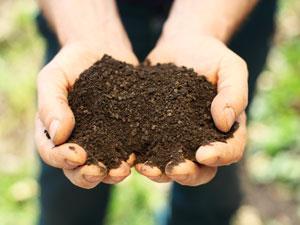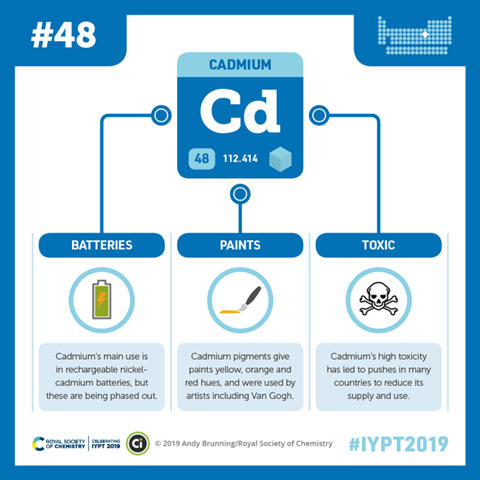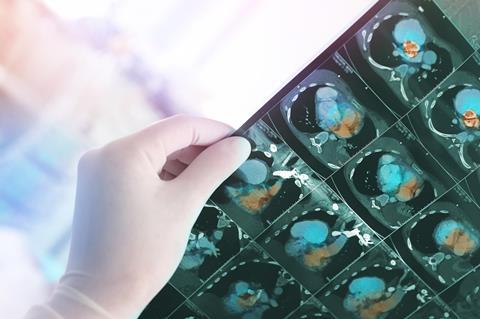Chris Smith
Hello, this week we're learning a very painful lesson about a heavy metal
Steve Mylon
Ouch Ouch!
I cannot imagine that this is all someone would be saying if they were unfortunate enough to be stricken with the disease of the same name. That's right, the ouch-ouch disease.
From the description, it seems like the pain would be intense enough to make me say a lot more than just ouch-ouch.
Itai-Itai is the original Japanese for ouch ouch. The disease results from excessive cadmium poisoning and was first reported in a small town about 200 miles north west of Tokyo. There, rice grown in cadmium contaminated soils had more than 10 times the cadmium content than normal rice. Excess cadmium began to interfere with calcium deposition in bones. The ouch-ouch-ness of this disease resulted from weak and brittle bones subject to collapse due to high porosity.

It is amazing to think that cadmium was able to accumulate to such high levels that it could overwhelm the human body's already intense defenses against it. It's an insidious little, I mean, heavy metal.
Cadmium sits right below zinc on the periodic table and therefore shares many of its same chemical properties. In the environment it is distributed nearly everywhere we find Zinc and therefore when we mine zinc, we consequently mine cadmium. When we galvanize (zinc treat) a nail or some other bit of steel, a little cadmium comes along for the ride.
Think for a minute about how important galvanization is to the industrialized world. If you don't know, trust me, it's really important, and as such, this little bit of cadmium that comes along for the ride, becomes a lot of potential cadmium exposure. Add that to other avenues of exposure, like mines and metal processing along with the ease of cadmium uptake by agricultural crops, and we really are lucky our bodies have developed a system to attenuate the cadmium exposure in our diets. If not, a lot more of us might be saying 'Ouch, ouch!'

So, how do our bodies do it? We take advantage of cadmium chemistry. The cadmium ion is positively charged and posses a large polarizability. Think of it like a water balloon with many electrons sloshing around from side to side. To a chemist, this is referred to as "soft (or B-type) lewis acid' behavior. These soft lewis acids prefer the company of soft lewis bases such as negatively charged (reduced) sulfur – aka sulfide. As cadmium gets absorbed by the human body it stimulates the production of the enzyme metallothionein which has an abundance of sulfide containing amino acids. Each metallothionein enzyme can sequester up to seven cadmium ions providing a fairly nice buffer against high cadmium intake. Those people who suffered from the ouch ouch disease just had too much cadmium in their diets which overwhelmed the sophisticated and elegant defense mechanism.
I certainly don't want to give you the idea that cadmium has a completely chequered past. One of the things that makes cadmium so interesting is its many useful properties as well. To give cadmium its fair shake, you should know some of the most brilliant colours and paints result from cadmium salts and artists have taken advantage of these for years. Nickel-cadmium batteries show promise through higher efficiencies which will demonstrate their importance in the next generation of electric vehicles.

Cadmium is an essential element in many forms of a new class of semi-conductor known as quantum dots. These advanced materials show promise in the areas of electronics, photo-voltaics and medical imaging. And finally in nature, a group at Princeton University a few years back showed that some marine diatons can substitute cadmium for zinc in the important enzyme carbonic anhydrase. This demonstrated that cadmium can be a nutrient as well. For we humans however, don't count on any nutritive value in cadmium, leave that to the dietons. Cadmium intake through contaminated foods or even tobacco smoking can lead to all kinds of problems, some even worse than the ouch-ouch disease.
Chris Smith
So the take home message is, don't eat your rechargeables. That was Steve Mylon with the story of Cadmium, the chemical that keeps the world looking a nice range of colours. Next week, from colouring the world to changing it.
Katherine Holt
tin cans, tin foil, tin whistles, tin soldiers...these are that things that come to mind when we think of tin. Which is unfortunate, as tin cans are actually made from steel; tin foil is made from aluminium and tin whistles...well you get the idea. To be associated with a list of obsolete consumable items is especially unfortunate for tin, when we consider that it was responsible for literally changing civilisation! Have you heard of the Bronze Age?
Chris Smith
Well if not, do join Katherine Holt to find out how Tin made it all happen on next week's Chemistry in its Element. I'm Chris Smith, thank you for listening and goodbye.













No comments yet